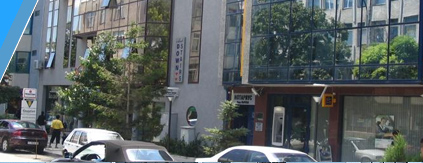|
|
The village of Gradets is located in South-East Bulgaria. It comprises a part of Kotel Municipality – Sliven District. Its size is approximately 28sq.m. It has 614 inhabitants. The area is situated on 100 to 199m above sea level. There are only 19km from the village of Gradets to the regional city of Sliven, 19km to the town of Yambol, 82km to the town of Bourgas, 70km to the town of Stara Zagora, and 262km to the capital Sofia. Sliven municipality covers 1367 sq. km. It borders on Yambol Municipality to the south, Bourgas Municipality to the east, Kotel Municipality to the north, Tvarditsa Municipality to the west and on Nova Zagoza Municipality to the southwest.
Sliven lies at the feet of the southern flanks of Slivenska Planina mountain (1181m) which borders the east Balkan. South and southeast it is opened to the Sliven field which monotony is broken by the isolated bulk-like heights (up to 300m sea elevation). North of the city of Sliven and close to the living quarters of the town the light imparts a blueish tinge to the prophyry massif known as the Sinite Kamani or Blue Rocks. The park of the same name includes 6684.3 ha of the Balkan.
Sliven municipality is located in the region of the sub-Balkan fields and in the transitional continental climatic zone. Average annual air temperature is 12.4°Ñ. Winter average monthly temperature is 1.2°Ñ (the winters are mild) and the summers are relatively dry - 23.2°Ñ. Autumns are longer than springs.
Cultural events and monuments located at and taking place in the Municipality of Sliven:Some of the most popular symbols of Sliven are the Blue Rocks, the Karandila locality, the Old Elm Tree, the monument of Hadji Dimitar, the monument of the Seventh Cavalry Regiment - Orleto /the Little Eagle/, the town's clock tower, and the Factory of Dobri Zhelyazkov. Cultural heritage and traditions are still alive. There are three state institutions - a theater, a puppet theater, and a national museum of the textile industry. The Museum of History has over 80,000 exhibits. The Art Gallery – has one of the richest collections in the country, consisting of over 6,000 paintings and three permanent exhibitions. The District Library - keeps over 250,000 books on a wide variety of topics.There are over 460 archaeological, over 200 architectural and 120 historic monuments of culture, of which 9 are of national importance. Some of the most attractive and most frequently visited places of interest include the Museum of the Textile Industry, the Museum of Sliven Ethnography, Hadji Dimitar's House, the Art Gallery, St. Sofia Church and St. Dimitar Church. Festivals held in Sliven - the International Children's Folk Dance festival, the National Festival of Children's Books, the folklore festivals: Masquerade Game Celebrations, A Fair by the Tundzha River, Kermen, Winter Holidays - Mechkarevo, the Karakachan National Fair. Additionally, The first International Mountaineering Film Festival was held in Sliven in 2003.
Tourism opportunities and environmental protection for the region:
The Koutelka Nature Reserve is located in the Sinite Kamani /the Blue Rocks/ National Park and has an area or 7 sq. km. It is of international importance for the protection of rare bird species - ossifrage, Egyptian vulture, falcon, Falco peregrinus Tunstall, etc. - and the ecosystem of medium-moist forests. Water in the Sliven Mineral Baths has been proved to have a positive effect in the treatment of gastrointestinal diseases, bilious and liver diseases, as well as bones and joint diseases and the peripheral nervous system. There are many archaeological finds from Roman and Byzantine times. There have been regular archaeological excavations in Hissarlaka dating back to the year of 1982. Examples of the lasting architectural traditions from the period of National Revival and the ethnographic wealth of the region can be seen in the Sliven's Ethnography Museum.
To see the exact location of the village of Gradets on the map, please click on the link below:BGmaps
|
|
|
|


